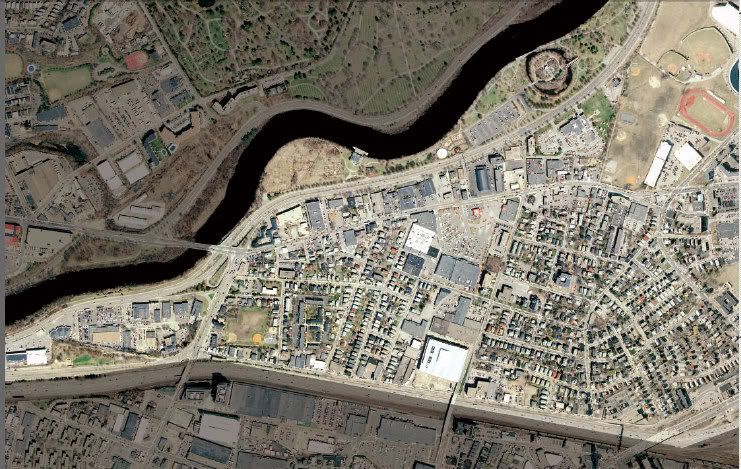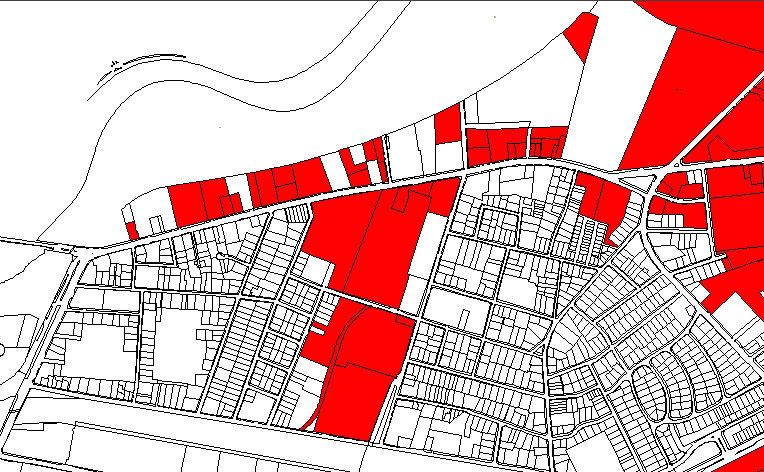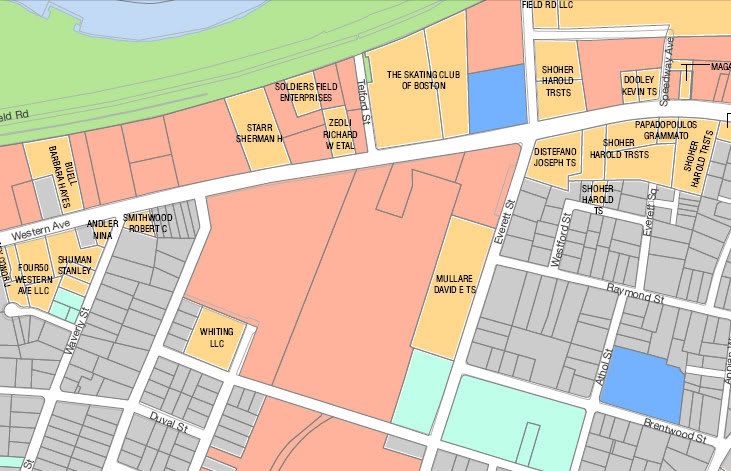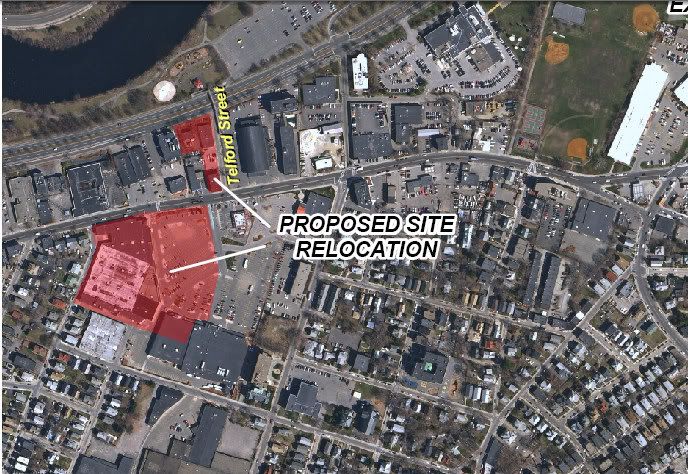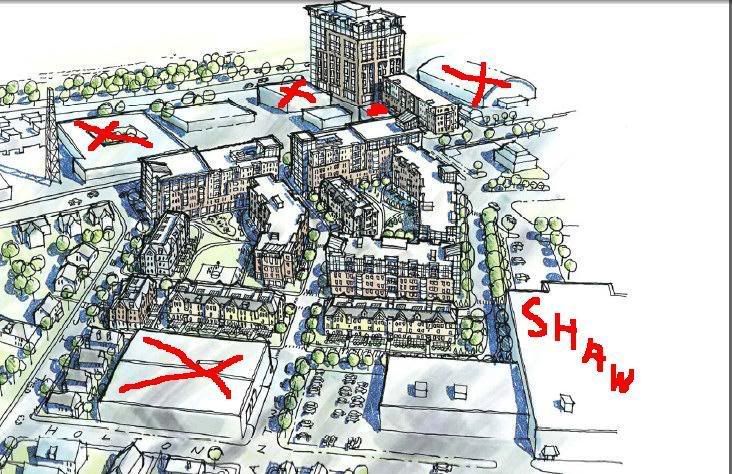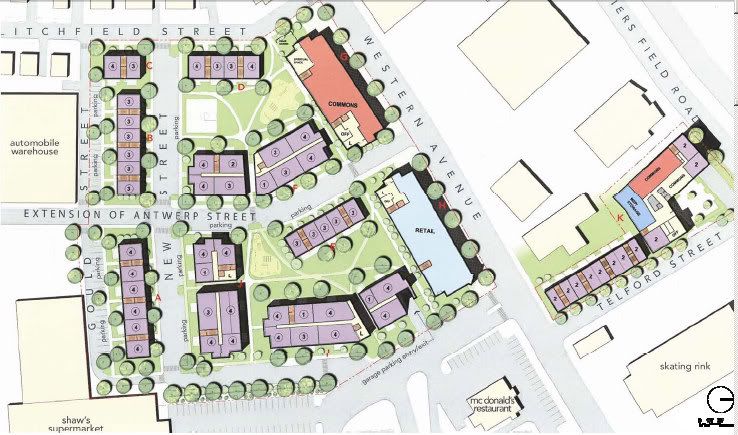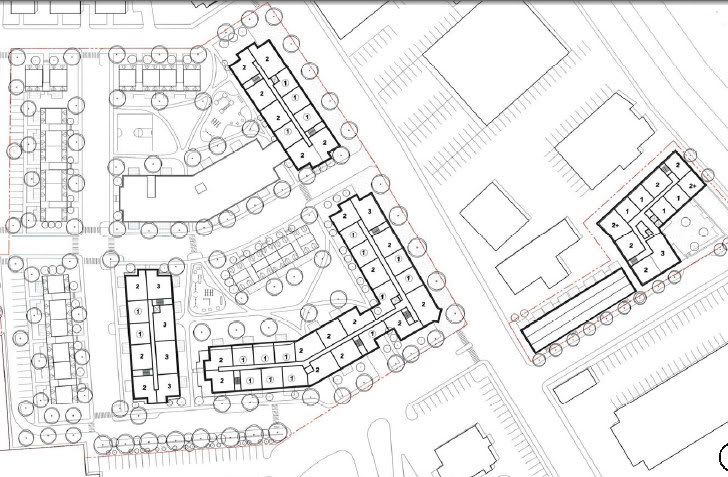North Allston, west of N. Harvard St.
Harvard owned property, west of N. Harvard St.
Property ownership near Brighton Mills
(Red is Harvard, blue is city, aqua is non-profit, gold is commercial, gray is residential)
Planned site for the new Charlesview
Sketch of new Charlesview. Property not owned by Harvard marked in red.
Site plan for new Charlesview
Site plan showing buildings higher than four floors
The 2004 North Allston Strategic Framework called for 2600 - 3000 new residential units (including the Charlesview replacement) to be built in N. Allston in the next 20 years. Lets assume that half those units are built west of N. Harvard St., and have 3,000 people living in these units.
> If you maintain the current N. Allston population density of 30 people per acre when siting and building these 1,500 units, you will need 100 acres of land to do that.
> If you apply a population density for the new Charlesview of about 140+ people per acre, you would need 21 acres of land (14 additional to that being used for Charlesview) to build these units.
> If you use a unit density of 57 units per acre (the approximate density of the new Charlesview) you would need 26 acres to build 1,500 units, 19 additional acres beyond what would be used for the new Charlesview.
I don't know how the 2,600 - 3,000 new units (including a new Charlesview) number was derived, but the community seemed to accept it as a key element of the Strategic Framework. For me, there are four possible explanations for this:
1.) The community was naive and poorly informed, and thus readily manipulated by City Hall and the BRA into accepting this housing goal.
2.) The community was idealistic and supportive of the goal, but had never thought through the implications of building this many new units.
3.) The community was cynical, and accepted the new housing number believing that nothing would ever really happen for years.
4.) The community expected (other than for Charlesview) that most of the new units would be built east of N. Harvard St., on Harvard land. (I think Harvard committed to building 700-900 of the 2600-3000 units, which would be used for graduate and Harvard-affiliated housing.)
The new Charlesview project seems completely consistent with the Strategic Framework with regard to size (number of units), and site. The project also appears to be consistent with the Framework with regard to affordability.

